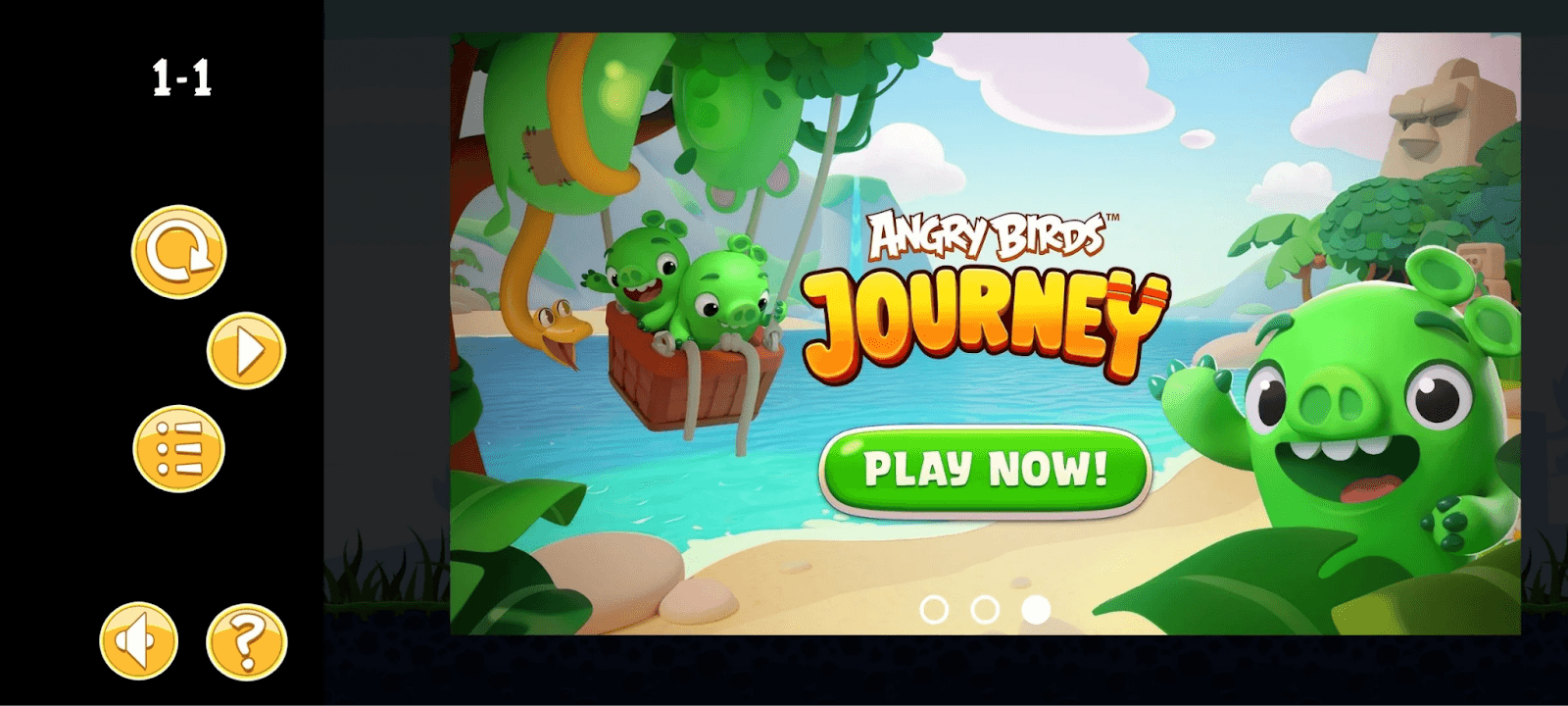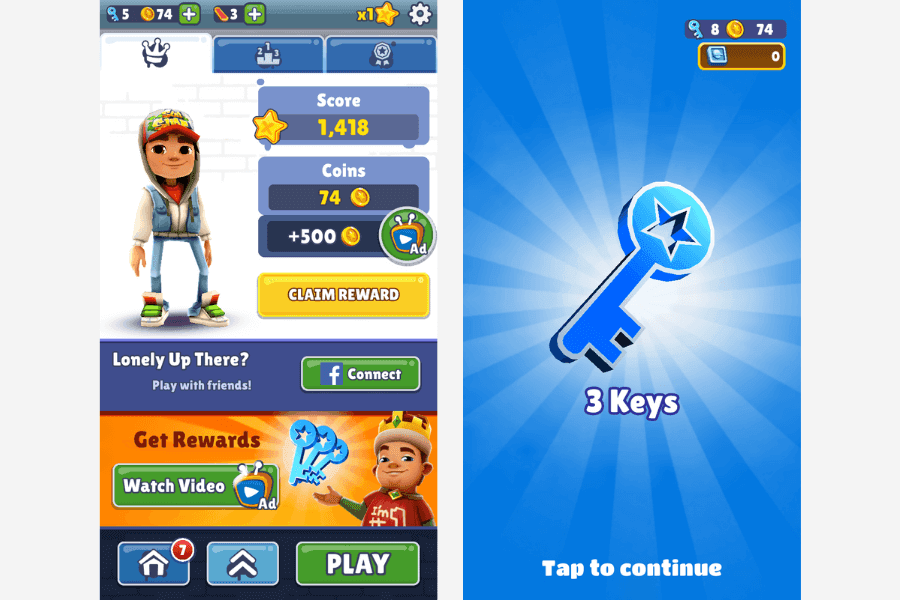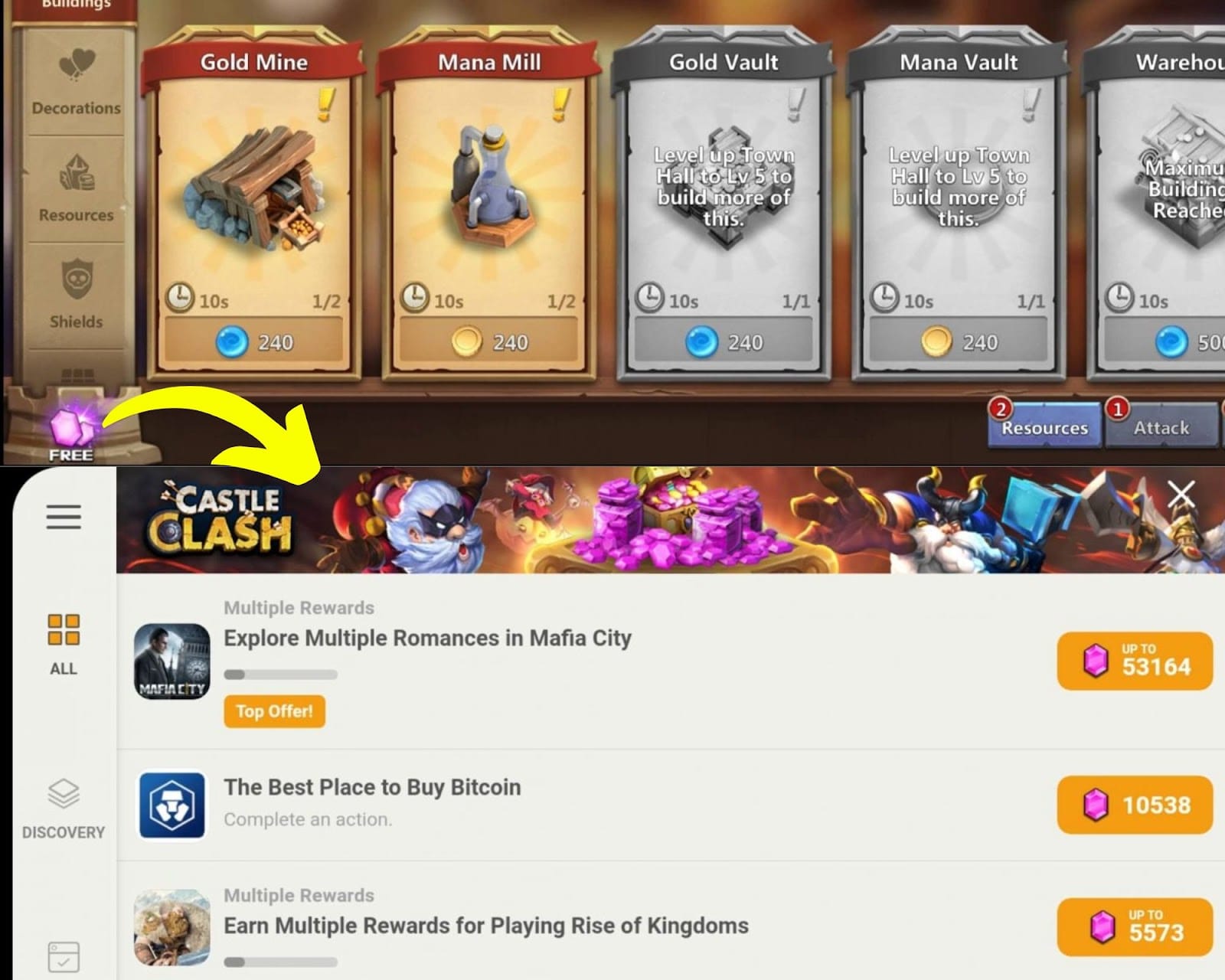Effective Ad Monetization Strategies Explained
You’re looking to boost your game’s bottom line, but relying only on in-app purchases or subscriptions leaves non-paying players idle and cuts off a significant revenue source. When banners or interstitials pop up incorrectly, you interrupt the gameplay flow and risk pushing players away. By integrating display, video, and incentivized ads, such as rewarded videos and offerwalls, you turn passive users into active participants who willingly trade their attention for in-game rewards.
Hyper-casual titles run on quick 4–6-minute sessions with multiple daily returns, creating prime windows for high-CPM impressions at natural breaks. Hybrid-casual models layer ads behind microtransaction gates, capturing value from free and paying cohorts without hurting the experience.
Aligning ad formats with real player behaviors and respecting their time builds a sustainable revenue engine that lifts lifetime value and sharpens ROAS on your UA campaigns.
Understanding Ad Monetization
Ad monetization involves integrating in-app advertising, including display, video, and incentivized formats, into your mobile game to monetize non-paying players through impressions, clicks, or completed views, rather than relying solely on direct purchases or subscriptions.
While ad monetization is especially potent in hyper-casual titles, where rapid session cycles and high volume drive strong CPMs, the industry is shifting toward hybrid-casual models, in which in-app purchase (IAP) revenue often pulls equal or greater weight. In midcore and hardcore segments, such as 4X strategy games, IAP remains the dominant revenue engine, with ads serving more as a supplementary layer than a primary driver.
Benefits of Ad Monetization
Accessibility: Offering your game as free-to-play with integrated ads lowers the barrier to entry, expanding your install funnel and reducing the cost per install (CPI).
Revenue Diversity: Ad monetization complements IAP and subscription revenue in hybrid models, creating multiple income streams that stabilize your overall yield.
Player-Friendly: When implemented thoughtfully, especially via rewarded video ads, it can enrich the gameplay loop rather than disrupt it, boosting engagement and retention.
By diversifying your monetization portfolio with thoughtfully placed ad formats and incentivized experiences, you can broaden your audience, optimize lifetime value (LTV), and improve return on ad spend (ROAS) for your user acquisition (UA) campaigns.
Coupling free-to-play accessibility with targeted ad placements accelerates install velocity while safeguarding your average revenue per user (ARPU) targets.
To fully capitalize on these benefits, it is essential to understand which ad formats best align with your gameplay experience and monetization objectives.
Understanding Ad Formats for Mobile Games
Selecting the right ad format is key to engaging players while maintaining a seamless experience. Below is a breakdown of the most common formats:
1. Banner Ads:
Banner ads are small, rectangular advertisements typically displayed at the top or bottom of the game screen. They provide a continuous, non-intrusive brand presence, making them ideal for maintaining visibility without disrupting gameplay. Additionally, banner ads can also serve as a testing ground for basic UA creatives or messaging, allowing you to gauge the effectiveness of different ad designs.

For example, in the game above, the banner ad at the bottom of the screen, “Limited-time holiday offer: Buy two Chromecasts for $55,” promotes an external product unrelated to the gameplay.
2. Native Ads
Native ads are designed to blend seamlessly with your game’s user interface, appearing as organic elements rather than overt advertisements. This integration enhances user experience, driving incremental eCPM by delivering ads that feel like part of the game.

For example, in Angry Birds, native ads are strategically placed during menus or post-level screens.
3. Interstitial Ads
Interstitial ads are full-screen advertisements that appear during natural breaks in gameplay, such as between levels or during pauses in gameplay. They maximize impressions due to their immersive nature, but require careful frequency management to prevent player frustration. When timed correctly, interstitial ads can achieve high engagement rates, though you must balance visibility with user experience to avoid churn.

For example, in Candy Crush, after completing a challenging level, players are presented with a full-screen interstitial ad promoting exclusive deals on power-ups, extra moves, or boosters.
4. Playable Ads
Playable ads are interactive previews that allow players to experience a mini-version of another game within your app, earning revenue through ad impressions or installs. While often used for UA to promote your own game, in the context of monetization, showing playable ads from other titles can generate significant income.
For example, MarketJS created a playable ad for Gardenscapes, a game that has garnered over 100 million downloads. The ad featured a mini-game that captured the essence of the full game, engaging users and encouraging them to install the complete version.
5. Rewarded Ads
Rewarded ads are opt-in, full-screen videos that players choose to watch in exchange for tangible in-game rewards, such as extra lives, hard currency, boosters, or other premium items. Because the choice rests with the player and the incentive is clear from the outset, rewarded ads drive high completion rates, supporting both engagement and retention without disrupting the core gameplay loop.

For example, in Subway Surfers, at the end of each run, the game offers a “Watch Video” button that players can tap to earn three keys, the premium currency used for revives or power-up purchases. Likewise, on the post-run summary screen, it presents an option to double the coins just collected by viewing a short rewarded video ad.
6. Offerwalls
Offerwalls are in-game features that present players with a list of tasks, such as installing apps, completing surveys, or making purchases, in exchange for rewards like in-game currency or other benefits. They are particularly effective for engaging high-value users, or “ad whales,” who contribute disproportionately to revenue.

For example, in Castle Clash, the integration of Tapjoy's offerwall is a notable example of how in-game features can be seamlessly customized to enhance the user experience. The offerwall is accessed through a small, gem-adorned "Free" sign, which, upon selection, directs players to the Tapjoy interface.
While choosing the right creative ad format is vital, true success comes from aligning your ad strategy with user acquisition, ensuring each complements the other to drive sustainable growth.
Also Read: Understanding Ad Mediation Platforms for Mobile Apps & Games
Synergizing UA and Ad Monetization
By aligning these two pillars, you can target ad-friendly users and foster data-driven collaboration, maximize revenue through strategic ad placements:
1. Targeting High-Value, Ad-Friendly Users
To improve ad monetization, prioritize acquiring users who are likely to engage with ads. This can increase your average eCPM (Effective Cost Per Mille) and the lifetime value of ad revenue per user. These users, often called "ad whales," are a small but critical segment.
Analyze UA Data for Ad Engagement: Examine your UA data to identify patterns highlighting ad engagement, such as demographics, gaming habits, and in-app behaviors like time spent in-game or interactions with offers. Users who engage with rewarded videos or complete in-app offers are prime candidates for ad-friendly cohorts.
Refine Audience Segments with Behavior-Based Triggers: Segment and retarget high-value users based on their engagement with ad content. Send install and in-app event data from your app (via SDK or server-to-server integration) to your mobile measurement partner (MMP). The MMP forwards postbacks to ad networks and analytics platforms, enabling retargeting and lookalike modeling. Ensure your MMP (e.g., AppsFlyer, Adjust) is configured to share attributed and unattributed events, helping all networks optimize campaigns around your most valuable cohorts.
Avoid intrusive ad formats that may drive churn. Prioritize ad types that integrate well with gameplay, such as rewarded videos and interactive ads, to support user retention and ad LTV.
2. Data-Driven Collaboration
By aligning on data sharing and consent, UA and monetization teams can jointly optimize both acquisition and ad monetization:
Ensure Complete Postback Configuration: Configure your app and MMP to deliver install and in-app events to all integrated partners. Include both attributed (“win”) and unattributed (“lose”) postbacks so networks can refine bidding strategies across all sources.
Share Critical Metrics: Provide both UA and monetization teams access to cohort LTV, ROAS, and ad engagement KPIs. High-LTV install postbacks sent to ad networks help them optimize lookalike targeting. In contrast, in-app event postbacks inform the monetization team on which ad formats perform best for those cohorts.
Align on Privacy and CMP Implementation: With Google’s Transparency & Consent Framework (TCF) effective January 2024 and Apple’s App Tracking Transparency ATT opt-out rates still high on iOS, implement a certified consent management platform (CMP). The CMP captures user consent, enabling your MMP to choose the appropriate postback method (standard or Advanced Privacy), ensuring compliance while preserving personalization for eligible users.
When UA and ad monetization work in harmony, the next step is to build a hybrid revenue model that balances monetization efficiency and a seamless player experience.
Also Read: Mobile Game Advertising in 2025: Key Insights and Best Practices
Building a Hybrid Monetization Model

For building a hybrid monetization model, focusing on combining revenue streams and balancing revenue with user experience (UX) is a great approach:
1. Combining IAP, Ads, and Subscriptions
A robust hybrid monetization model integrates in-app purchases (IAP), ads, and subscriptions to create a layered revenue structure that appeals to both paying and non-paying players. Here’s how you can implement this approach effectively:
Layering Ad Placements
Strategically layer ad placements behind IAP paywalls and subscription opt-ins to create a tiered experience. For example, design your game so that premium levels, exclusive features, or specific content areas are accessible only to players who have made an in-app purchase or subscribed to a premium service.
This ensures that paying users enjoy an ad-free experience in these areas, while free users encounter ads in non-premium sections. This approach incentivizes purchases by offering a tangible benefit, ad-free gameplay, while maintaining accessibility for free-to-play users.
Personalizing with Predictive LTV
Leveraging predictive Lifetime Value (pLTV) can optimize your hybrid monetization strategy by tailoring experiences to individual player segments. Predictive LTV uses machine learning to predict a player’s future value based on engagement, retention, and monetization data.
For instance, you can offer high-LTV players premium features or subscriptions earlier in their journey to maximize their spending potential. Conversely, lower-LTV players might encounter more ad placements to boost revenue from non-paying segments.
By analyzing pLTV, you can identify players likely to purchase the VIP pass and target them with personalized offers, such as a discounted first month, to drive conversions.
2. Balancing Revenue & UX
With global gaming app installs increasing by 4% year-over-year in 2024 but sessions dipping slightly by 0.6%, retention remains a critical challenge. Here’s how you can achieve this balance:
Mapping Monetization Touchpoints:
Map each monetization touchpoint to the player’s journey to avoid disruptive overload. During the onboarding phase, focus on delivering a frictionless experience without intrusive ads or purchase prompts, as these can overwhelm new players and lead to high churn rates.
As players progress to mid-game and end-game stages, gradually introduce monetization elements, such as rewarded ads for in-game rewards or prompts for premium purchases.
For example, in a role-playing game (RPG), you might avoid ads during the tutorial but introduce rewarded ads after players complete their first quest, aligning monetization with natural breaks in gameplay.
This strategic mapping enhances the user experience (UX) by ensuring monetization feels contextually appropriate.
A/B Testing for Optimization:
A/B testing is essential for finding the optimal balance between revenue and UX. Test variables such as ad placement density (e.g., ads after every third versus fifth level) and frequency caps (e.g., one ad per session versus three) to measure their impact on key metrics like Day-1 and Day-7 retention rates.
For instance, you might run an experiment where Group A sees interstitial ads every three levels, while Group B sees them every five levels. By analyzing retention and revenue data, you can identify the configuration that maximizes ad impressions without driving players away.
AI and predictive analytics can further refine your monetization strategy by personalizing the player experience. By analyzing behavioral data, such as session length, purchase history, and engagement patterns, AI can recommend tailored in-app purchase (IAP) offers or ad experiences that resonate with individual players.
With a hybrid model in place, optimization becomes an ongoing process that requires continuous testing and iteration to refine both monetization and engagement tactics.
Iteration & Creative Testing
Iteration and creative testing allow you to optimize ad performance, improve player engagement, and boost revenue:
1. Soft Launch Frameworks
A soft launch is simply a limited release of your game to a select audience, often in geo tests, to uncover performance bottlenecks before committing significant user acquisition (UA) spend. When you soft launch in Tier-2 markets such as Brazil, Indonesia, or Eastern Europe, you’re staging a controlled roll-out that lets you validate ad load and onboarding flows without the inflated CPIs of Tier-1 regions.
Testing various creative formats, including banners, interstitials, playables, videos, and rewarded ads, during a soft launch helps you identify which ad units resonate best with your users. You should adjust your game and ad strategy based on metrics such as Day-1 retention, session duration, and rewarded ad opt-in rates to fine-tune your monetization model before scaling.
Benchmark your soft launch against industry norms, average session lengths of 4–5 minutes, and Day-1 retention around 25-40%, to set clear go/no-go thresholds and avoid over-investing in underperforming titles.
Specifically, track opt-in rates for rewarded video ads so you can segment players by their engagement propensity and tailor incentives and messaging accordingly.
2. Automated Optimization
You should rely on your chosen mediation SDK (e.g., Google AdMob Mediation, ironSource, Unity Ads Mediation, AppLovin MAX) to automatically optimize which network wins each impression, either via a waterfall that reorders networks daily based on historical eCPM, or via real-time bidding (auto-eCPM) where partners submit dynamic bids at auction time so you always capture the highest possible revenue per request. You do not pick the individual ads or advertisers; the SDK’s ad server and demand-side platforms determine which creatives serve to your users at runtime.
While you cannot dictate specific ads, you can configure performance filters. For each network in your mediation group, set eCPM floors to prevent low-paying bids, balancing fill rate against revenue yield. Similarly, blacklisting options let you exclude specific advertiser categories or competitor app campaigns, ensuring that you don’t inadvertently promote direct rivals or irrelevant content.
Many platforms also offer automated A/B testing of placement parameters (e.g., frequency capping, ad format mix). The SDK continuously tracks key metrics (ad requests, impressions, clicks, conversions, revenue). It uses simple statistical tests or machine-learning models to shift traffic toward higher-yield configurations without manually rebuilding your creative vault.
Finally, to activate automated optimization you simply integrate the mediation SDK once, tag your placements (interstitial, rewarded, banner), configure global rules (floors, blacklists, pacing caps), and let the platform’s auto-eCPM or waterfall optimizer run in the background, no ongoing UA-style targeting or creative sequencing needed on your end.
Also Read: Power of Creative Ads in Mobile Games & App Marketing
Conclusion
What matters most is aligning ad strategy with real player behavior and clear business goals. Map each ad touchpoint and format to your audience, then audit user cohorts to identify those most likely to engage.
Run a soft‐launch test in a low‐CPI market to validate assumptions, and keep a close eye on ARPDAU, eCPM, and ROAS dashboards. Automate creative rotation and predictive LTV modeling, allowing you to respond quickly to what works, and integrate privacy-first consent management to stay compliant.
By layering rewarded experiences, display ads, and microtransactions in thoughtful, non‐intrusive ways, you unlock steady revenue from both free and paying players. Iterate relentlessly, every new test refines your approach, and you’ll turn ad monetization into a reliable growth engine that benefits your players and your bottom line.
Experience how Segwise can elevate your UA campaigns. Start your 14-day free trial today!
FAQs
1. What is ad monetization, and why should I use it?
Ad monetization enablesyou to earn revenue from non-paying players by displaying video or incentivized ads. It complements in-app purchases and subscriptions, broadening your income streams without forcing payments on every user.
2. How do rewarded ads boost player engagement and revenue?
Rewardedvideos offer players optional, full-screen ads in exchange for in-game rewards, such as extra lives or currency. Since users opt in willingly, completion rates are high, and the experience feels like a bonus rather than an interruption.
3. When should I test ad formats during a soft launch?
Run a low-CPI soft launch in a smaller market to try banners, interstitials, playables, and rewarded ads. Tracking opt-in rates, session length, and retention helps you select the best formats before scaling your user acquisition (UA) spend.
4. How can hybrid monetization improve lifetime value?
Combine ads, in-app purchases, and subscriptions so paying users enjoy fewer ads while free players still generate revenue through ads. Layer ad placements behind paywalls to incentivize upgrades without cutting off non-spenders.
5. What privacy steps are essential for compliant ad strategies?
Implement a certified consent management platform (CMP) to collect user permissions under frameworks such as Google's TCF and Apple's ATT. This ensures you can serve personalized ads on opted-in devices and maintain trust
